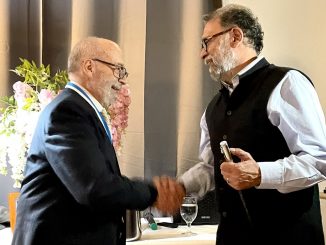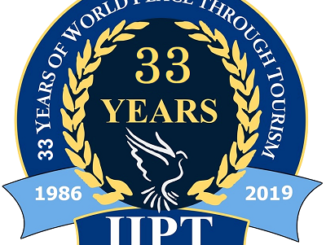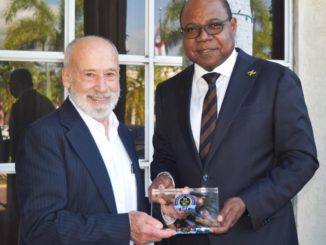Without peace there can be no tourism, says Louis D’Amore, founder and president of the International Institute for Peace through Tourism, which is why he believes every traveller should be an ambassador for peace. Kath Hudson reports

An hour after the terrorism attack in London, which struck at the heart of its tourist centre, I first spoke to Louis D’Amore about the link between tourism and peace. As the drama unfolded in the shadow of Big Ben and on Westminster Bridge – two of London’s main tourist landmarks – his views on the interconnectedness of peace and tourism sounded especially pertinent. “When I first proposed the idea for tourism and peace conference, in the early 1980s, industry leaders in Canada asked what tourism has got to do with peace,” says D’Amore. “Their view was that peace is the government’s job and the industry should focus on things it can control. “Then, in 1985, terrorism around the world peaked, with attacks mainly aimed on the tourism industry, including the TWA aeroplane hijacking and massacres at airports in Rome and Vienna. My consultancy company was monitoring terrorism as part of our futures research on the tourism industry and we saw that tourism, around the world, declined a onethird. Industry leaders then saw the connection: without peace, there can be no tourism,” he says. As a result, the Tourism Industry Association of Canada (TIAC), unanimously endorsed the idea for an International Conference on Tourism and Peace, so the creation of the International Institute for Peace through Tourism began to gain momentum. The first Global Tourism Conference took place in 1988, and featured video messages from then-US president Ronald Reagan and the Pope.
Higher purpose for tourism
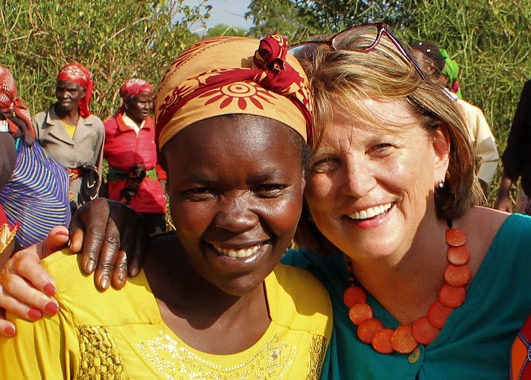
At a time when the industry was focused on mass tourism, the Vancouver conference introduced the concept of sustainable tourism, as well as a new paradigm for a higher purpose of tourism: that it could be used to promote international understanding; collaboration among nations; protect the environment and preserve biodiversity; enhance cultures and value heritage; sustainable development; poverty reduction and healing wounds of conflict. Since the inaugural conference, the IIPT has organised 18 conferences and summits, as well as many seminars and workshops, and developed the first code of ethics and guidelines for sustainable tourism. This year is the 30th anniversary and the global summit will be held in Montreal, with sustainable tourism for development and peace at the top of the agenda. “IIPT was formed firstly with a vision to make travel and tourism the world’s first formal peace industry,” says D’Amore. “Every traveller is potentially an ambassador for peace. When you travel, you realise we have more in common than we have differences.” Indeed, at the end of the Cold War Reagan and Soviet leader Mikhail Gorbachev encouraged travel between the two countries to encourage Americans and Russians to better understand each other.
Broadening segments
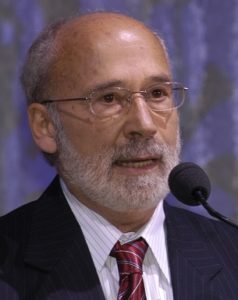
The tourism industry is expanding all the time. When D’Amore first started assessing the industry in the 1970s, there was simply mass tourism. Now there are many different segments. Ecotourism became popular in the late 1980s, followed by adventure tourism, cultural tourism and volunteer tourism. Then came agrotourism, wine tourism, culinary tourism, medical tourism and, recently, wellness tourism. D’Amore predicts that the moon will soon be the ultimate destination – and SpaceX plans the first tourist journey around the moon for 2018/9. Tourism is one of the world’s largest and fastest growing industries and accounts, directly and indirectly, for one in every 10 jobs, according to D’Amore. This is expected to continue, because when people become more prosperous, one of the first priorities they have is to travel. D’Amore predicts the tourism industry will continue to grow in most areas of the world, particularly in Asia. However, while destinations, such as Rwanda, Colombia, Vietnam, Iran and Sri Lanka, are making the most of peace time by promoting their tourism offerings, other popular destinations have become victims of their own success, such as Barcelona and Venice, each of which has exceeded their carrying capacity for tourism. “Tourism has so overrun Venice that the people who historically lived there can’t afford to live there anymore. In time, this changes the nature of the city and the experience visitors have. Large cruise ships are not helping the situation,” says D’Amore. “Tourism needs to be directed to those areas which have an excess of ecological capacity, such as Africa, which offers excellent tourism opportunities, with many national parks and protected areas and cultural tourism. At the same time, the growth of tourism in these areas creates employment and entrepreneurial opportunities, particularly for groups such as women and the young.”
How peace boosts tourism
 According to the WTO, Spain, Portugal and Croatia (itself once a victim of war) all experienced large spikes in interest last year, up 13.9 per cent, 15 per cent and 17 per cent, respectively. Germany, the Netherlands and Malta also saw tourism increase. Iran, which boasts beautiful beaches, skiing, impressive Islamic architecture and 19 UNESCO sites, saw incoming tourism wither away during the war with Iraq in the 1980s, followed by political isolation over its nuclear programme. However, following a deal over its nuclear programme in 2015 and efforts by the current government to boost tourism, the country is now considered safe, cheap and edgy, so visitors are returning. It welcomed more than 5 million tourists in 2014, and the upward trend is projected to continue, with Tehran now being seen as a must-do destination.
According to the WTO, Spain, Portugal and Croatia (itself once a victim of war) all experienced large spikes in interest last year, up 13.9 per cent, 15 per cent and 17 per cent, respectively. Germany, the Netherlands and Malta also saw tourism increase. Iran, which boasts beautiful beaches, skiing, impressive Islamic architecture and 19 UNESCO sites, saw incoming tourism wither away during the war with Iraq in the 1980s, followed by political isolation over its nuclear programme. However, following a deal over its nuclear programme in 2015 and efforts by the current government to boost tourism, the country is now considered safe, cheap and edgy, so visitors are returning. It welcomed more than 5 million tourists in 2014, and the upward trend is projected to continue, with Tehran now being seen as a must-do destination.
Helping to promote peace
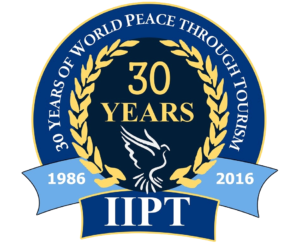 IIPT launched two flagship projects for its 30th anniversary. With the Global Peace Parks Project – originally an initiative to celebrate Canada’s 125th birthday, in 1992 – the organisation has a goal of 2,000 peace parks being dedicated or re-dedicated by late 2018. IIPT has a Peace Parks Tool Kit, which it will share with any organisation willing to create a peace park. IIPT is also keen to engage with airlines, travel agents, tour operators and other organisations around the world in its Travel for Peace Campaign, promoting the belief that every traveller is potentially an ambassador for peace and that we are all part of the same global family. A third initiative was the IIPT Peace Tour to Jordan, which happened in November 2017. It included an opportunity to interact with Syrian refugee children while providing games, handicrafts and other gifts at the school. HRH Princess Dana Firas was patron of the IIPT Travel for Peace Tour and President of the Board of the Petra National Trust.
IIPT launched two flagship projects for its 30th anniversary. With the Global Peace Parks Project – originally an initiative to celebrate Canada’s 125th birthday, in 1992 – the organisation has a goal of 2,000 peace parks being dedicated or re-dedicated by late 2018. IIPT has a Peace Parks Tool Kit, which it will share with any organisation willing to create a peace park. IIPT is also keen to engage with airlines, travel agents, tour operators and other organisations around the world in its Travel for Peace Campaign, promoting the belief that every traveller is potentially an ambassador for peace and that we are all part of the same global family. A third initiative was the IIPT Peace Tour to Jordan, which happened in November 2017. It included an opportunity to interact with Syrian refugee children while providing games, handicrafts and other gifts at the school. HRH Princess Dana Firas was patron of the IIPT Travel for Peace Tour and President of the Board of the Petra National Trust.
How conflict impacts tourism
According to figures compiled by Euromonitor for the World Tourism Organisation (WTO), civil instability and terror attacks were blamed for a 9.9 per cent fall in tourism arrivals in Turkey in 2016. After a terror attack at the beach resort of Sousse, Tunisia, the country saw a drop of 18.7 per cent in its tourism industry the following year, prompting the Tunisian ambassador to the UK to issue a plea to the Foreign Office to relax travel restrictions, claiming the loss of tourism was crippling the economy. The November 2015 terror attacks in Paris are suspected to be the cause of an 8 per cent fall in visitors to France. Perhaps the tourist destination which is suffering the most as a result of its political fortunes and a number of attacks in tourist locations is Egypt. Following terrorist attacks and unrest, figures from Egypt’s statistics agency, CAPMAS, showed tourism numbers in July 2016 were down by 41 per cent compared with the previous year, which had already seen massive decreases.
Kath Hudson

